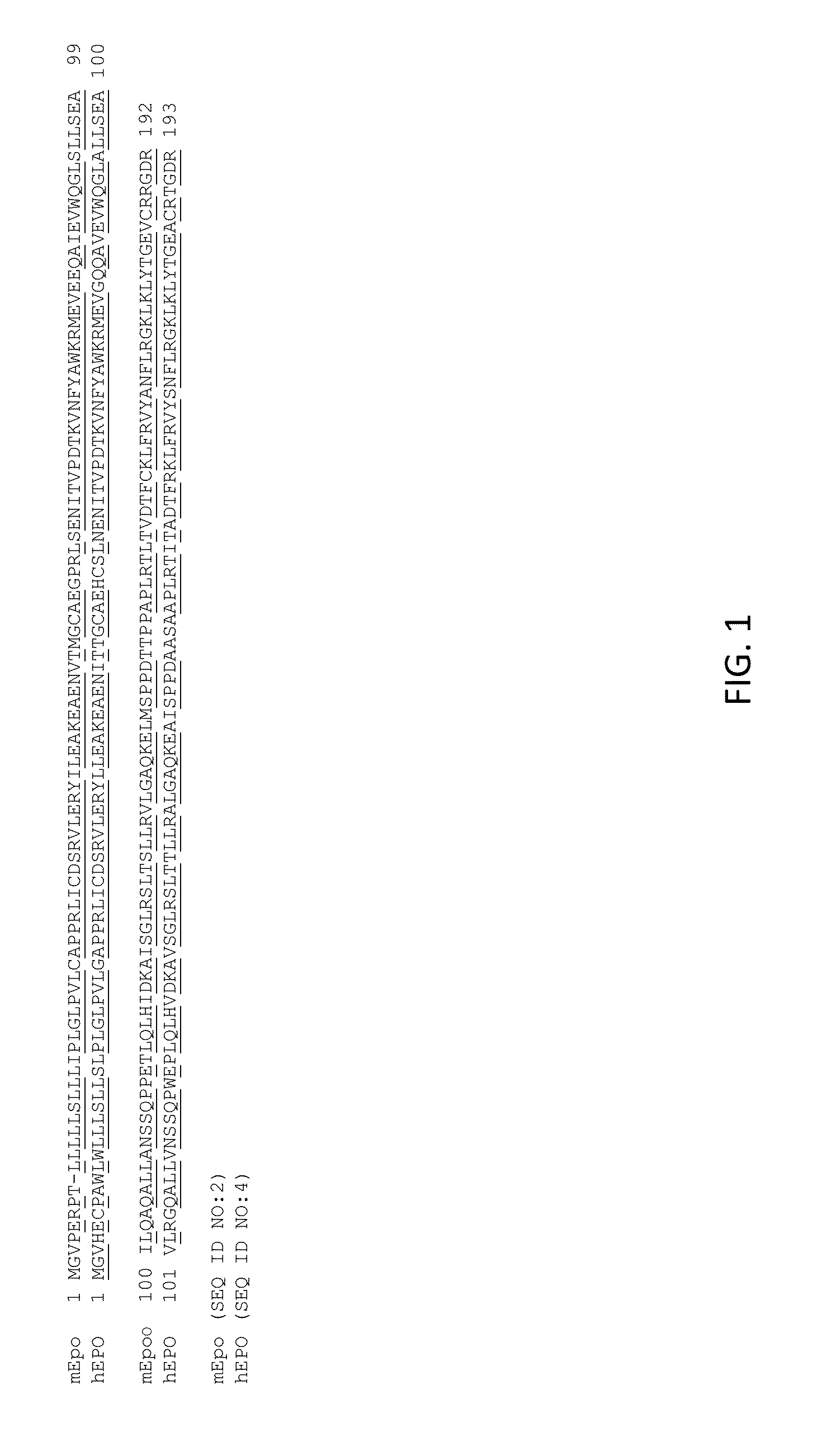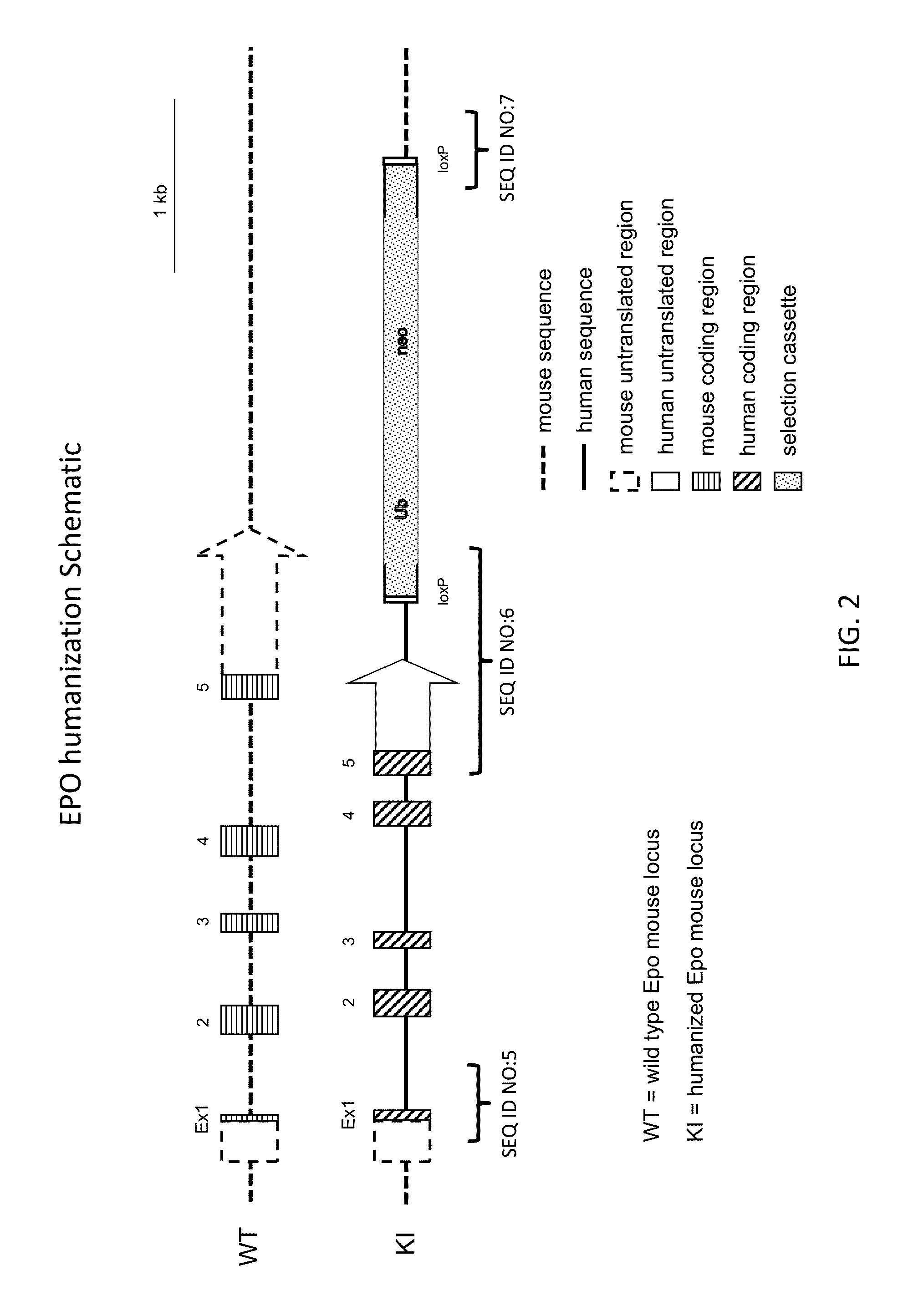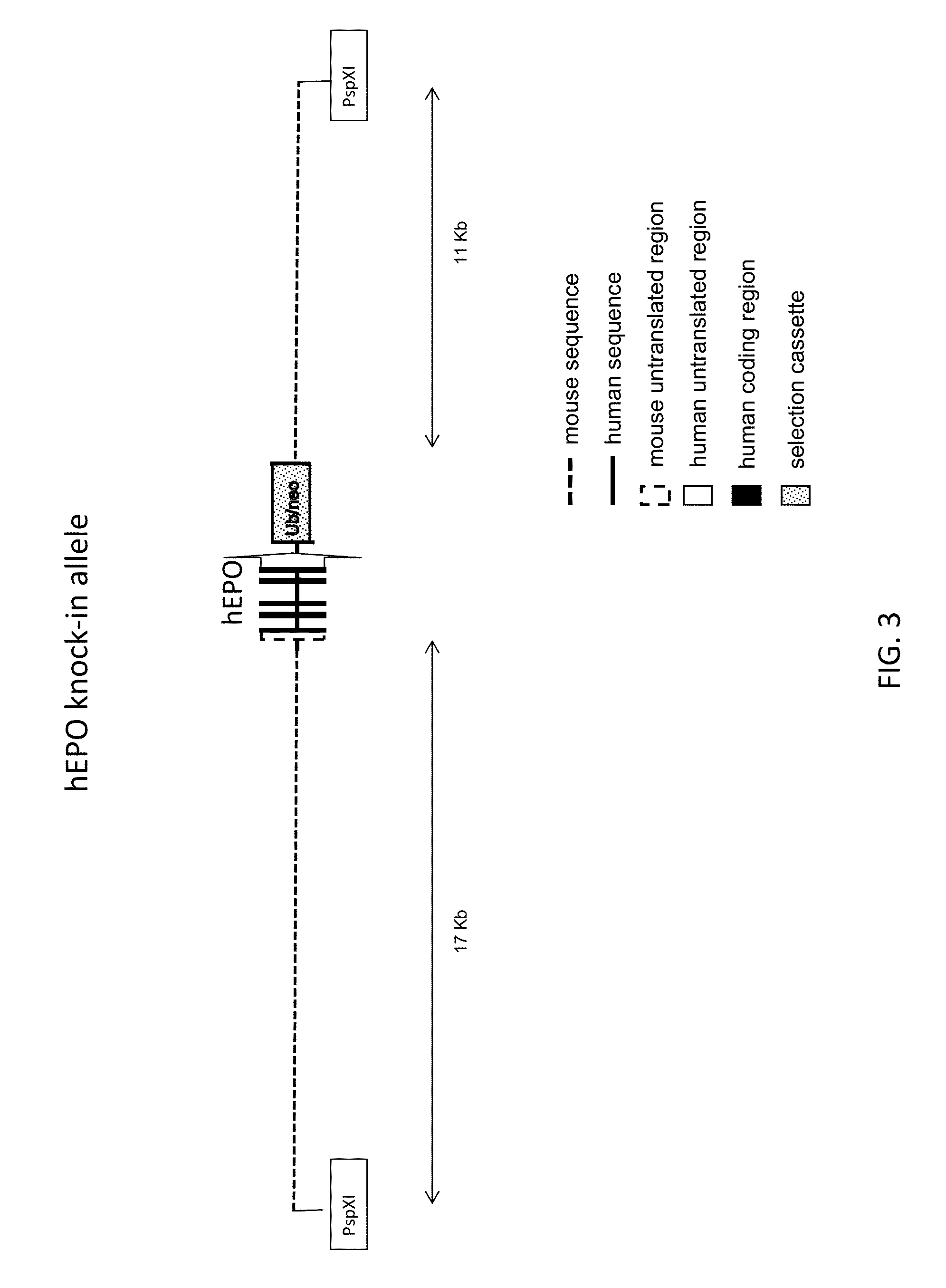Genetically modified non-human animals expressing human epo
- Summary
- Abstract
- Description
- Claims
- Application Information
AI Technical Summary
Benefits of technology
Problems solved by technology
Method used
Image
Examples
example 1
Generation of Human EPO Knock-in Mice
[0129]Coding sequence at the mouse erythropoietin gene locus (Mouse NCBI Gene ID:13856; MGI:95407; RefSeq transcript cDNA at NM—007942.2 (SEQ ID NO:1) and encoded protein at NP—031968 (SEQ ID NO:2)) was replaced with coding sequence from the human erythropoietin gene locus (Human NCBI Gene ID:2056; HGNC: 3415; RefSeq cDNA transcript at NM—000799.2 (SEQ ID NO:3) and encoded protein at NP—000790 (SEQ ID NO:4)).
TABLE 1SEQ1gatgaagact tgcagcgtgg acactggccc agccccgggt cgctaaggag ctccggcagcID61taggcgcgga gatgggggtg cccgaacgtc ccaccctgct gcttttactc tccttgctacNO: 1121tgattcctct gggcctccca gtcctctgtg ctcccccacg cctcatctgc gacagtcgag181ttctggagag gtacatctta gaggccaagg aggcagaaaa tgtcacgatg ggttgtgcag241aaggtcccag actgagtgaa aatattacag tcccagatac caaagtcaac ttctatgctt301ggaaaagaat ggaggtggaa gaacaggcca tagaagtttg gcaaggcctg tccctgctct361cagaagccat cctgcaggcc caggccctgc tagccaattc ctcccagcca ccagagaccc421ttcagcttca tatagacaaa gccatcagtg gtctacgtag cctcacttca ...
example 2
Generation of Human SIRPα-Mice
[0136]In connection with some of the examples described herein, a genetically modified mouse including a nucleic acid sequence encoding human SIRPα randomly integrated into the genome of the genetically modified mouse was prepared as described in U.S. Patent Application Publication No. 2013-0340105, the disclosure of which is incorporated by reference herein.
[0137]In connection with some of the examples described herein, a human SIRPα knock-in mouse was prepared as described below. Human SIRPα is known to exist in at least 10 allelic forms. In this particular example, human SIRPα variant 1 is employed for humanizing an endogenous SIRPα gene of a mouse.
[0138]A targeting vector for humanization of an extracellular region of a SIRP (e.g., SIRPα) gene was constructed using VELOCIGENE® technology (see, e.g., U.S. Pat. No. 6,586,251 and Valenzuela et al. (2003), supra).
[0139]Briefly, mouse bacterial artificial chromosome (BAC) clone bMQ-261H14 was modified to...
example 3
Generation of Compound Knock-in Mice
[0144]Human EPO knock-in mice were crossed to mice expressing other human genes of interest either as random integrants into the mouse genome or as knock-ins, i.e. from the corresponding mouse locus. For example, Rag2− / −, IL-2rgY / −, hEPO KI mice were crossed with mice expressing human TPO from the mouse TPO locus (Rongvaux et al., 2011, Proc Natl Acad Sci USA, 108(6): 2378-2383), human IL-3 and human GM-CSF from the mouse IL-3 / GM-CSF locus (Willinger et al, 2011, Proc Natl Acad Sci USA, 108(6): 2390-2395), human M-CSF from the mouse M-CSF locus (Rathinam et al, 2011, Blood, 118(11): 3119-3128), and / or human SIRPa expressed as a random integrant (Strowig et al., 2011, Proc Natl Acad Sci USA, 108(32): 13218-13223) or from the mouse locus as described above to generate mice expressing a combination of these human proteins (Rag2− / −Il2rgnullhSIRPah / h Tpoh / h Mcsfh / h Il3 / Gmcsfh / h EPOh / h). Genetically modified mice expressing one or more of human TPO, hum...
PUM
| Property | Measurement | Unit |
|---|---|---|
| Nucleic acid sequence | aaaaa | aaaaa |
Abstract
Description
Claims
Application Information
 Login to View More
Login to View More - R&D
- Intellectual Property
- Life Sciences
- Materials
- Tech Scout
- Unparalleled Data Quality
- Higher Quality Content
- 60% Fewer Hallucinations
Browse by: Latest US Patents, China's latest patents, Technical Efficacy Thesaurus, Application Domain, Technology Topic, Popular Technical Reports.
© 2025 PatSnap. All rights reserved.Legal|Privacy policy|Modern Slavery Act Transparency Statement|Sitemap|About US| Contact US: help@patsnap.com



